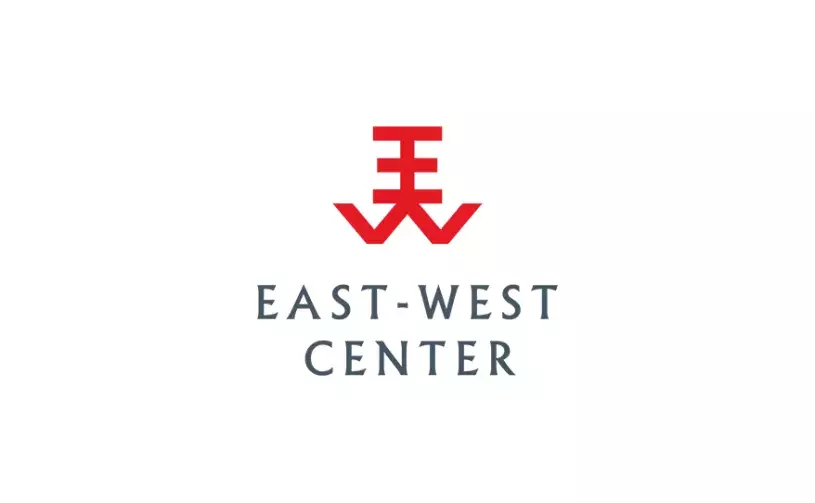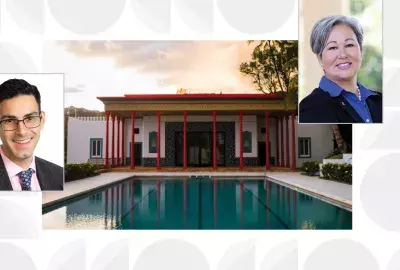Error message

By Kevin Woods
HONOLULU (Aug. 8, 2018)—The borderlands between Myanmar and China are mountainous and blanketed in forests. The region is inhabited by diverse populations of ethnic minorities who practice shifting cultivation, moving between small forest patches. They tend to be governed by local customary authorities and laws and have little interaction with central governments.
In Myanmar, this region has been splintered for decades by fighting between ethnic-based armed rebel organizations and the national military. This legacy of war and (counter) insurgency has produced a highly fractured territorial complex of strongmen who have cooperated to varying degrees with the Myanmar military state. Territories under the authority of militias and former insurgent groups who have signed ceasefires are jointly administered with the national government, whereas rebel groups who continue their armed political struggle govern their territories and populations autonomously.
Over the past 10 years, the government has increased control over the region by allocating large tracts of land to private businesses—often with ties to the military or to favored local armed groups—ostensibly to grow rubber and other crops. These “land grabs” often have been financed in part by the Chinese government under the guise of a crop substitution program to reduce the production of opium poppies.
In northern Myanmar’s Kachin State, about 1.4 million acres of land have been awarded to large-scale agribusiness enterprises. A typical rubber plantation comprises a few hundred acres, but concessions can range in size from 50 to as many as 300,000 acres.
These Chinese-financed land concessions have been awarded to a panoply of armed groups, including narco-militia organizations that have been aligned with the government’s military and ex-rebel groups that have signed ceasefires. The introduction of large-scale agricultural schemes has become entangled in these “armed sovereignties.”
In interventions cast as pro-poor agricultural investments, national and regional authorities grant tracts of land to pro-government paramilitary leaders and local bosses. Facilitated by private Chinese investments, these strongmen build roads and clear-cut forests in and around their concessions. In this process, rebel hideouts are leveled and often replaced with outposts of Myanmar army battalions. Profits from logging, mineral extraction, and agricultural production go to the new concession holders and their military and government partners.
From the Chinese side, the surge in large-scale agribusiness ventures stems from a national opium substitution program. In 2006, China’s State Council created the Opium Replacement Special Fund, placed under the Yunnan provincial Ministry of Commerce. The fund provides financial incentives to Chinese businesses to engage in private agribusiness schemes in northern Myanmar and Laos.
To acquire large parcels of land in Myanmar and develop them into private agricultural estates, Chinese companies need to work with local militia strongmen as well as the national government and military, since these authorities hold the power to acquire land. In this process, local minority populations sympathetic to rebel groups are often forcibly removed from their traditional lands. Displaced villagers either join government- controlled roadside settlements—resembling “strategic hamlets” during the Cold War—or they flee to more remote settlements under rebel control.
Migrant landless laborers take most of the seasonal jobs on the new plantations. They are predominately ethnic-majority Burmans from Myanmar’s central region, but also Chinese citizens in areas near the China border. This change in demographics weighs on the ability to continue rebellion in the region and affects the outcome of local elections.
Given the crash in world rubber prices in 2008 and again in 2011, private entrepreneurs and their government and military partners could not have expected to earn much in profits from their newly developed rubber plantations. Rather, the rush to develop private agricultural estates has served to consolidate control over strategic areas along the roads that link Myanmar and China. In some cases, these new agricultural concessions have also provided a strategic base from which to launch attacks against battlefield enemies.
The Beijing government’s stated goals are to halt the production and trade of illegal drugs, enhance political and social stability along China’s shared border with Myanmar, increase imports of agricultural commodities, and provide a growing legal revenue base for ex-poppy farmers. The Myanmar government’s overarching strategy appears to be based on strengthening the military presence, instilling nationalism, and quelling ethnic armed political unrest, all the while profiting from the investment deals. Local militia leaders, who face growing threats to their armed rule and illicit business dealings due to ongoing political and economic reforms, seek to improve their status by positioning themselves as landed elite along strategic infrastructure routes to China.
Ironically, opium production is expanding. A litany of factors explains the apparent contradiction. For one thing, China’s commercialized drug substitution program provides new capital accumulation opportunities for local strongmen, many of whom are themselves suspected of being directly involved in the narcotics trade. Also, some of the local households that have been evicted from their farms to make way for agribusiness estates have been forced to fall back on the opium economy as one of the few livelihoods available to them. In fact, the potential income from rubber latex—especially since the price crashes—pales in comparison with drug money.
Today, the war in Myanmar’s northern borderlands continues without any prospect for peace. In Kachin State, one of the area’s largest agribusiness estates is wedged between government and rebel territories in what was marked previously as a protected forest reserve. After attacks and counter-attacks between the military and a rebel group, the estate has reportedly become heavily mined by both sides.
This messy patchwork of armed sovereignties prevents any one entity from monopolizing power over the region and its inhabitants. China has not steamrolled over northern Myanmar to create some sort of feared Chinese sub-state. But neither has the Myanmar government been able to create neat, legible landscapes and complacent subjects. Nor have paramilitaries, ceasefire groups, or rebels been able to funnel enough Chinese investments into their territories to achieve full autonomous control. Rather, a new sort of battle ensues.
Kevin Woods is a Visiting Scholar in the Research Program at the East-West Center. He can be reached at [email protected].
This East-West Wire is based on Kevin Woods (2018), “Rubber out of the ashes: Locating Chinese agribusiness investments in ‘armed sovereignties’ in the Myanmar–China borderlands.” Territory, Politics, Governance. Special issue: Grounding China’s Global Integration. DOI: 10.1080/21622671.2018.1460276.
Download a PDF version of this Wire article.
##
The East-West Wire is a news, commentary, and analysis service provided by the East-West Center in Honolulu. All or any part of the Wire content may be used by media with attribution to the East-West Center or the person quoted. To receive Wire articles via email, subscribe here. For links to all East-West Center media programs, fellowships and services, see www.eastwestcenter.org/journalists.
The full list of East-West Wires produced by the Research Program is available on the East-West Center website. For more on the East-West Center Research Program, see www.eastwestcenter.org/research.
The East-West Center promotes better relations and understanding among the people and nations of the United States, Asia, and the Pacific through cooperative study, research, and dialogue.Series editors:
Derek Ferrar
[email protected]
By Kevin Woods
HONOLULU (Aug. 8, 2018)—The borderlands between Myanmar and China are mountainous and blanketed in forests. The region is inhabited by diverse populations of ethnic minorities who practice shifting cultivation, moving between small forest patches. They tend to be governed by local customary authorities and laws and have little interaction with central governments.
In Myanmar, this region has been splintered for decades by fighting between ethnic-based armed rebel organizations and the national military. This legacy of war and (counter) insurgency has produced a highly fractured territorial complex of strongmen who have cooperated to varying degrees with the Myanmar military state. Territories under the authority of militias and former insurgent groups who have signed ceasefires are jointly administered with the national government, whereas rebel groups who continue their armed political struggle govern their territories and populations autonomously.
Over the past 10 years, the government has increased control over the region by allocating large tracts of land to private businesses—often with ties to the military or to favored local armed groups—ostensibly to grow rubber and other crops. These “land grabs” often have been financed in part by the Chinese government under the guise of a crop substitution program to reduce the production of opium poppies.
In northern Myanmar’s Kachin State, about 1.4 million acres of land have been awarded to large-scale agribusiness enterprises. A typical rubber plantation comprises a few hundred acres, but concessions can range in size from 50 to as many as 300,000 acres.
These Chinese-financed land concessions have been awarded to a panoply of armed groups, including narco-militia organizations that have been aligned with the government’s military and ex-rebel groups that have signed ceasefires. The introduction of large-scale agricultural schemes has become entangled in these “armed sovereignties.”
In interventions cast as pro-poor agricultural investments, national and regional authorities grant tracts of land to pro-government paramilitary leaders and local bosses. Facilitated by private Chinese investments, these strongmen build roads and clear-cut forests in and around their concessions. In this process, rebel hideouts are leveled and often replaced with outposts of Myanmar army battalions. Profits from logging, mineral extraction, and agricultural production go to the new concession holders and their military and government partners.
From the Chinese side, the surge in large-scale agribusiness ventures stems from a national opium substitution program. In 2006, China’s State Council created the Opium Replacement Special Fund, placed under the Yunnan provincial Ministry of Commerce. The fund provides financial incentives to Chinese businesses to engage in private agribusiness schemes in northern Myanmar and Laos.
To acquire large parcels of land in Myanmar and develop them into private agricultural estates, Chinese companies need to work with local militia strongmen as well as the national government and military, since these authorities hold the power to acquire land. In this process, local minority populations sympathetic to rebel groups are often forcibly removed from their traditional lands. Displaced villagers either join government- controlled roadside settlements—resembling “strategic hamlets” during the Cold War—or they flee to more remote settlements under rebel control.
Migrant landless laborers take most of the seasonal jobs on the new plantations. They are predominately ethnic-majority Burmans from Myanmar’s central region, but also Chinese citizens in areas near the China border. This change in demographics weighs on the ability to continue rebellion in the region and affects the outcome of local elections.
Given the crash in world rubber prices in 2008 and again in 2011, private entrepreneurs and their government and military partners could not have expected to earn much in profits from their newly developed rubber plantations. Rather, the rush to develop private agricultural estates has served to consolidate control over strategic areas along the roads that link Myanmar and China. In some cases, these new agricultural concessions have also provided a strategic base from which to launch attacks against battlefield enemies.
The Beijing government’s stated goals are to halt the production and trade of illegal drugs, enhance political and social stability along China’s shared border with Myanmar, increase imports of agricultural commodities, and provide a growing legal revenue base for ex-poppy farmers. The Myanmar government’s overarching strategy appears to be based on strengthening the military presence, instilling nationalism, and quelling ethnic armed political unrest, all the while profiting from the investment deals. Local militia leaders, who face growing threats to their armed rule and illicit business dealings due to ongoing political and economic reforms, seek to improve their status by positioning themselves as landed elite along strategic infrastructure routes to China.
Ironically, opium production is expanding. A litany of factors explains the apparent contradiction. For one thing, China’s commercialized drug substitution program provides new capital accumulation opportunities for local strongmen, many of whom are themselves suspected of being directly involved in the narcotics trade. Also, some of the local households that have been evicted from their farms to make way for agribusiness estates have been forced to fall back on the opium economy as one of the few livelihoods available to them. In fact, the potential income from rubber latex—especially since the price crashes—pales in comparison with drug money.
Today, the war in Myanmar’s northern borderlands continues without any prospect for peace. In Kachin State, one of the area’s largest agribusiness estates is wedged between government and rebel territories in what was marked previously as a protected forest reserve. After attacks and counter-attacks between the military and a rebel group, the estate has reportedly become heavily mined by both sides.
This messy patchwork of armed sovereignties prevents any one entity from monopolizing power over the region and its inhabitants. China has not steamrolled over northern Myanmar to create some sort of feared Chinese sub-state. But neither has the Myanmar government been able to create neat, legible landscapes and complacent subjects. Nor have paramilitaries, ceasefire groups, or rebels been able to funnel enough Chinese investments into their territories to achieve full autonomous control. Rather, a new sort of battle ensues.
Kevin Woods is a Visiting Scholar in the Research Program at the East-West Center. He can be reached at [email protected].
This East-West Wire is based on Kevin Woods (2018), “Rubber out of the ashes: Locating Chinese agribusiness investments in ‘armed sovereignties’ in the Myanmar–China borderlands.” Territory, Politics, Governance. Special issue: Grounding China’s Global Integration. DOI: 10.1080/21622671.2018.1460276.
Download a PDF version of this Wire article.
##
The East-West Wire is a news, commentary, and analysis service provided by the East-West Center in Honolulu. All or any part of the Wire content may be used by media with attribution to the East-West Center or the person quoted. To receive Wire articles via email, subscribe here. For links to all East-West Center media programs, fellowships and services, see www.eastwestcenter.org/journalists.
The full list of East-West Wires produced by the Research Program is available on the East-West Center website. For more on the East-West Center Research Program, see www.eastwestcenter.org/research.
The East-West Center promotes better relations and understanding among the people and nations of the United States, Asia, and the Pacific through cooperative study, research, and dialogue.Series editors:
Derek Ferrar
[email protected]
East-West Wire
News, Commentary, and Analysis
The East-West Wire is a news, commentary, and analysis service provided by the East-West Center in Honolulu. Any part or all of the Wire content may be used by media with attribution to the East-West Center or the person quoted. To receive East-West Center Wire media releases via email, subscribe here.
For links to all East-West Center media programs, fellowships and services, see www.eastwestcenter.org/journalists.







